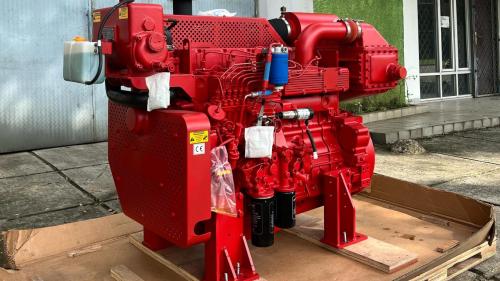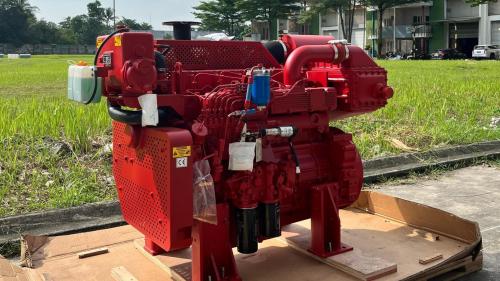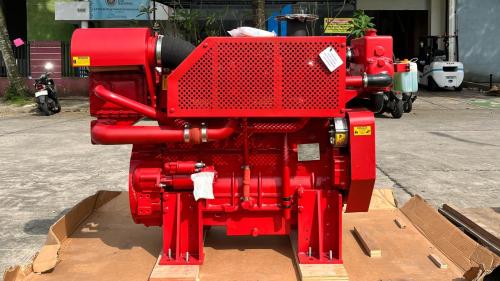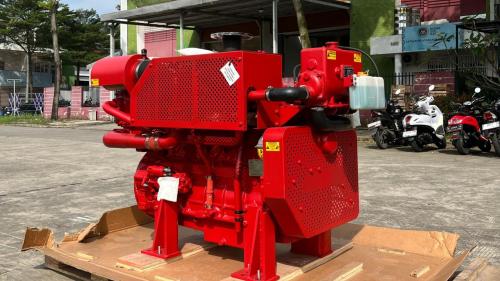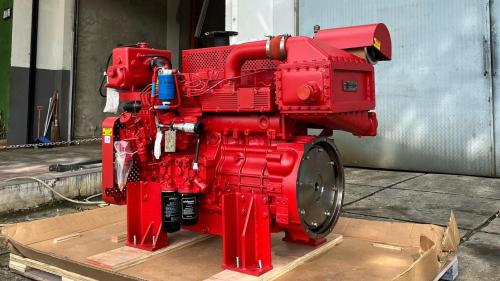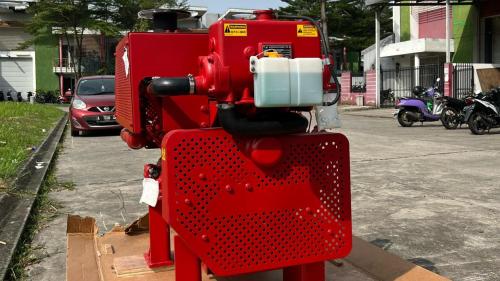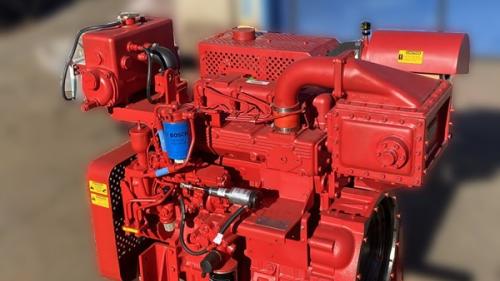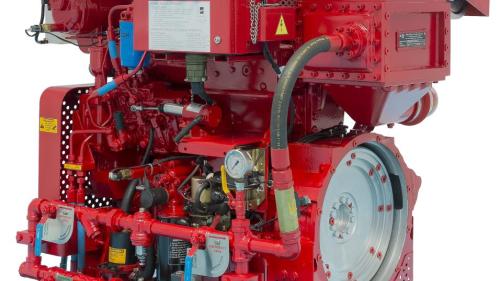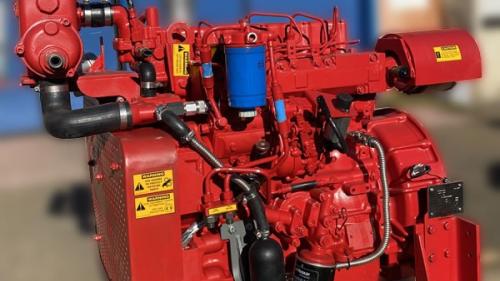
A fire engine is the primary driver used to rotate the impeller of a fire pump. Diesel engine-driven pumps are widely recognized and are specifically referenced in the NFPA-20 standard. To ensure reliability and safety, various regulations have been developed to ensure that diesel engines meet stringent performance criteria.
PT. Avisha Mitra Sejahtera offers a complete range of diesel engines from the reputable Kirloskar brand, manufactured in India. Our Kirloskar diesel engines are delivered as complete package units, fully assembled with a control panel, wiring harness, stub shaft, and a second starter. These engines are ready-to-use, designed for seamless integration with your fire pump system.
Kirloskar diesel engines are known for their robust construction, proven quality, and high performance. They are engineered to operate reliably under various atmospheric and field conditions, making them an excellent choice for fire pump installations.
We offer various types of Kirloskar diesel engines, including:
- Non-Listed Engines that meet NFPA criteria
- Certified Engines with Underwriters’ Laboratories (UL) and Factory Mutual (FM) approvals
- Cooling options such as Air Cooled, Radiator Cooled, and Heat Exchanger Cooled systems
With advanced technology from Kirloskar and our expertise in fire protection systems, we are ready to be your trusted partner in delivering dependable diesel engine solutions for fire pump applications.
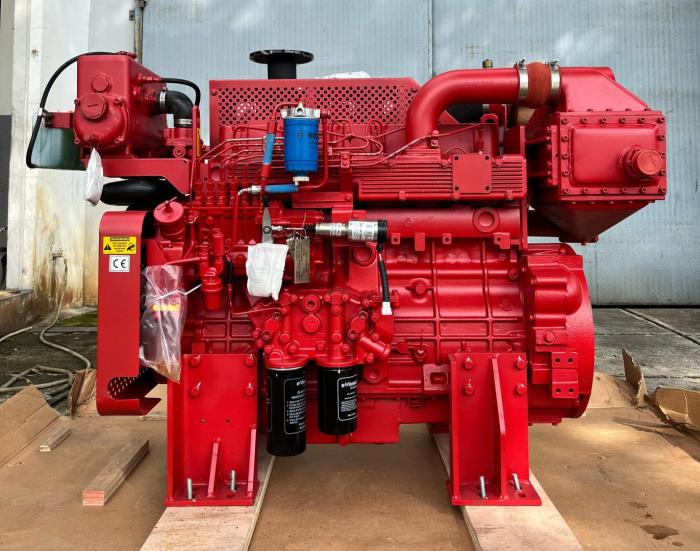
Optimizing Engine Performance Through Heat Exchanger Technology in Cooling Systems
An In-Depth Study on the Role of Thermal Management in Enhancing Engine Efficiency and Reliability
In today’s modern industrial and automotive sectors, thermal efficiency is a critical factor that directly influences engine performance, reliability, and operational longevity. Enhancing thermal efficiency not only improves engine functionality but also contributes to reducing energy consumption and overall operational costs. One of the key technologies that plays a vital role in achieving these objectives is the heat exchanger, an essential component integrated into the engine’s cooling system.
The primary function of a heat exchanger is to regulate and maintain the engine’s temperature within an optimal operating range by transferring excess heat from the engine to a cooling medium. This process prevents overheating, protects internal engine components from thermal damage, and ensures consistent and stable engine operation under varying load conditions.
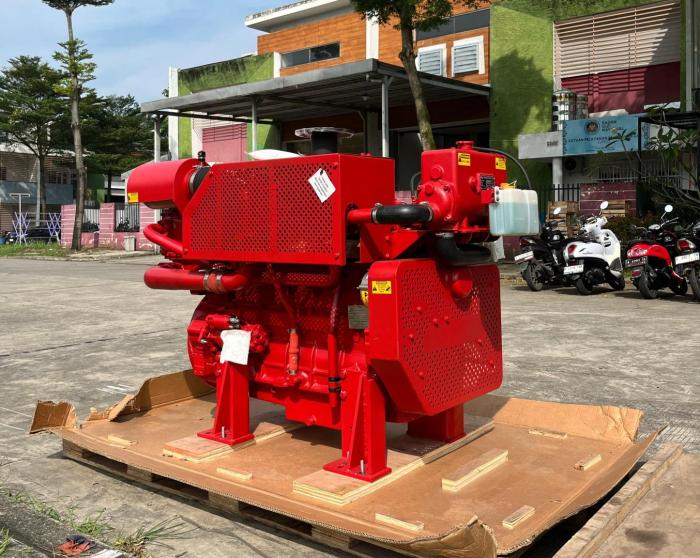
Diesel Engine-Driven Fire Pump Packages: Causes of Excessive Vibration
An Investigation into Mechanical Imbalances, Installation Issues, and Operational Factors Affecting
Diesel engine-driven fire pump packages play a vital role in fire protection systems, particularly in industrial and commercial environments. However, excessive vibration is a recurring issue that can negatively impact system performance and compromise the structural integrity of the equipment.
This vibration is typically caused by several factors, including shaft misalignment between the engine and pump, improper installation, internal engine faults, and the lack of a structured preventive maintenance program. Additionally, failure in the engine’s overspeed protection system can result in operation beyond safe limits, leading to severe vibration and potential internal damage.
Effective vibration control requires a comprehensive approach involving precise installation, regular preventive maintenance, and routine inspection of critical components and safety systems. By consistently applying these best practices, operational reliability and fire system readiness can be maintained, especially under emergency conditions.
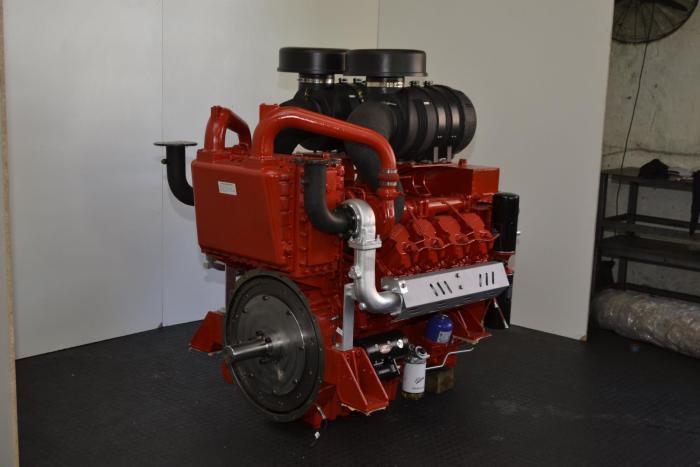
How do you select your fire engines?
Key Considerations in Choosing the Right Apparatus for Operational Efficiency, Safety, and Community
Fire engines, must meet certain criteria in order to be "selected" as a pump's driver. As a pump driver, the engine must deliver enough power so the pump can perform as it is rated as per the curve. The engine must also conform to environmental conditions. certain conditions may require specific aspect of the engines to be different.
One of the most obvious is the cooling method. There are three ways of cooling; air cooled, radiator cooled, and heat exchanger cooled. Since fire pumps are mostly located in a narrow space, i.e. specific buildings, basements, pump room, they lack ventilation. Heat exchanger cooled engines are considered to be the most effective option in this setting. Considering a larger space, a radiator engine may be used, but they are heavier due to the radiator size. Air cooled engines are rarely taken into consideration due to the stationary position, allowing little cooling flow to be present.


